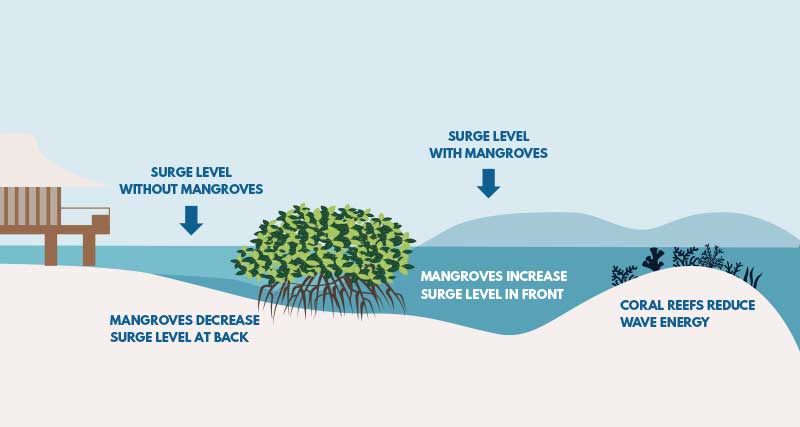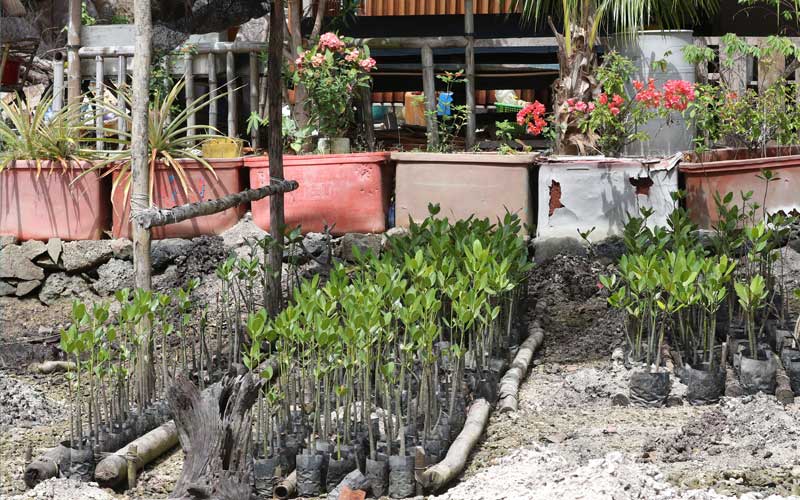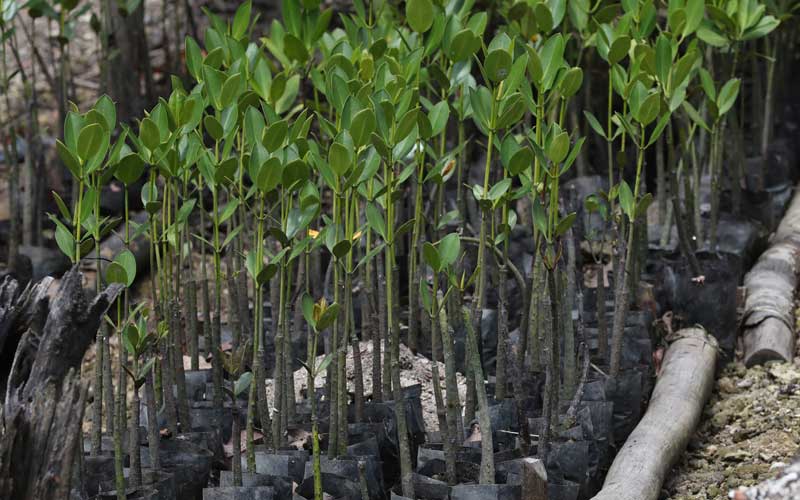Mangroves are salt-tolerant tree forests that bind land and sea, nature and humans. A total area of 766.2ha in the Anambas Islands is occupied by mangroves.
These floating forests are vitally important to the ecosystem, and the biodiversity that lives in and around them as they help stabilise the coastline ecosystem and prevent erosion.
Damage to the mangrove ecosystem in Kiabu has caused coastal abrasion in the area. The reduced mangrove population is driving a reduction in fish biomass, which depends on the mangrove ecosystem’s existence.
Through AF’s Mangrove Conservation Programme we are planting more mangrove trees to create a green belt area in Kiabu that will withstand sea waves and prevent abrasion. The mangrove seeds are obtained from mangrove forests that grow in various locations on Kiabu Island. Out of 25 mangrove species identified in Anambas, 10 of them belong to Rhizophora genus and the rest are planted on mangrove margins like Pandanus (screwpine).



